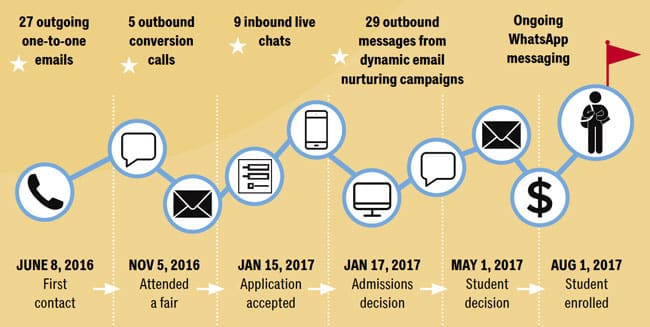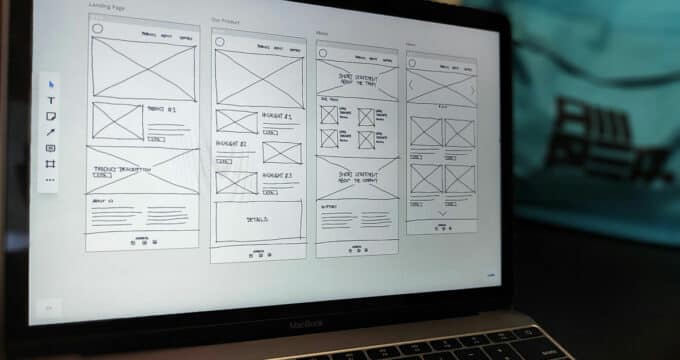24/7 Recruiting: How to use multiple channels to keep your marketing going around the clock
One thing we never hear,” a colleague said recently, “is that recruitment is getting easier.” As we have noted previously, growth in outbound student mobility has slowed over the past several years, and this is happening at the same time as many new players – schools and destinations alike – are vying for international students. The result? Intensified competition and a prospect pool presented with a much greater range of options. The pressure is on for all recruiters to keep their institutions front of mind for prospective students throughout their decision process. If that sounds like the start of an argument for working even harder or trying to stretch your limited marketing resources even further, it isn’t. But it is a call for more sophisticated and more efficient recruitment marketing, especially because many institutions and schools and agents are already doing it.
Integrating new channels
Think about all the ways you can reach and recruit new students. You can meet them at a student fair, or they can be referred to you by a trusted agent. You can connect through your website or on social media, or perhaps through an active link with a partner school or government organisation abroad. As illustrated in the chart below, there are several distinct channels through which students are recruited every day.

Keeping it real
Does a more broadly based, integrated recruitment strategy necessarily place unmanageable demands on your staff and budget? No. It would be as easy to think that building a new alumni programme is too much work, or that you’ll never have time to cultivate and support new institutional partnerships. Best practices are always scalable. Most educators could not quickly ramp up their efforts in each of these channels at once. The key is to carefully choose and integrate a manageable number of recruitment channels, and in a way that is sustainable over time. For example, maybe it’s not possible for your institution to build a fully featured global alumni programme today. But perhaps you could begin by creating a basic contact database for graduating students, or even organise an annual reception for alumni in a key sending market. If you don’t have time to scout the world for new institutional partnerships, perhaps you could formalise or expand an informal connection with a school that is already in your network.
Always on
The goal is to build a recruitment strategy in which each element is connected to all the others. If you went to an education fair in Brazil, for example, you would be well prepared to refer students to local agents or alumni. You might also have a highly efficient system for collecting leads, following up quickly with interested students, and connecting them with your offline and online networks – including agents, alumni, and social channels. The ideal is that even when the entire recruitment team has left the office, a student is still being recruited somewhere in the world. This happens when you’ve built great local networks or leveraged your online marketing to the point where a student can be productively engaged throughout their decision-making process.
Through a student’s eyes
To make this all more concrete, let’s consider what the typical decision process looks like for an international student. Study abroad is of course a huge decision for the student and his or her family, and one that usually unfolds over an extended period – most often a year or more.
To borrow a specific example from the enrolment management services company UniQuest, the illustration below maps the experience of an actual Indian student who enrolled for a degree programme in the UK in autumn 2017.

- “Where the students are: Mobile, messaging, and apps”
- “3 ways to give your recruitment marketing a boost”
- “Survey: Student recruitment the main driver for institutional web strategy”
- “2018 Agent Barometer: Global survey tracks agent perspectives on destinations, online learning, alumni, and student experience”
- “Five steps to a more active alumni programme”















